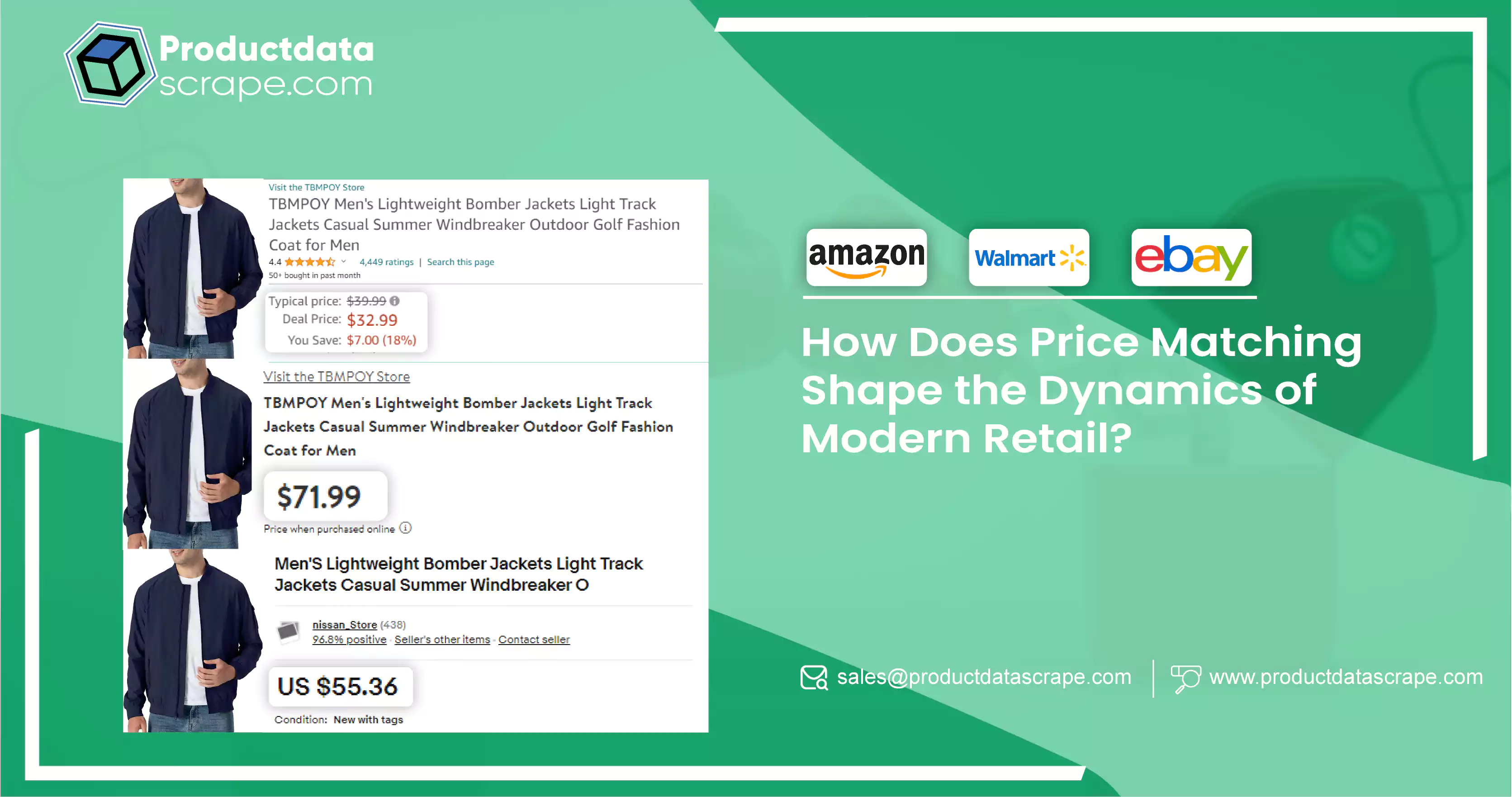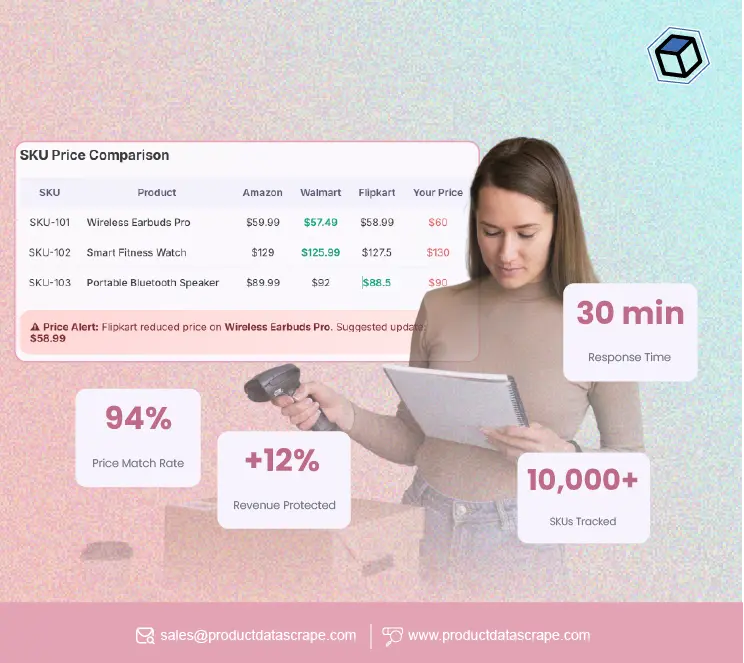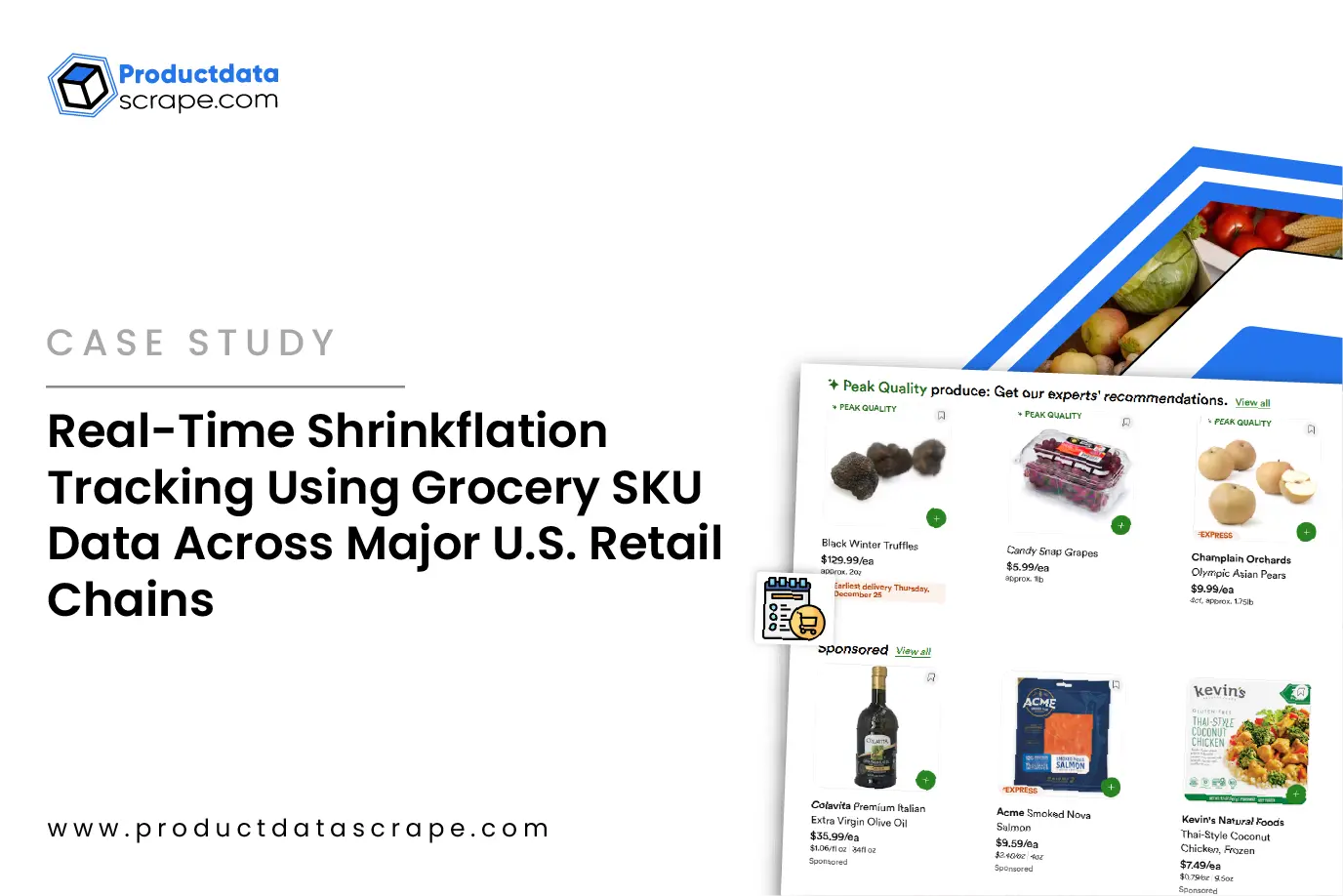
Amidst the 2024 economic climate, heightened shopper price sensitivity catalyzes a retail revolution, driving dynamic, data-informed pricing strategies and cutting-edge technology adoption. This surge in consumer price consciousness compels retailers to refine pricing tactics beyond traditional methods, embracing nuanced, data-driven models. Both eCommerce and brick-and-mortar stores leverage sophisticated technologies, ensuring accurate pricing that reflects market dynamics and consumer preferences. In this transformed landscape, "price matching" emerges as a pivotal strategy for retailers to demonstrate value commitment and maintain competitiveness against local retailers and rival brands. Retail data scraping is crucial in this evolution, providing insights into market trends, competitor pricing strategies, and consumer behavior. By leveraging scraped data, retailers can make informed pricing decisions, adapt swiftly to market changes, and meet evolving consumer expectations in the dynamic retail landscape 2024.
A Brief Introduction to Price Matching and its Working Principles
Price matching is a retail strategy where a store pledges to match a competitor's price for an identical product, ensuring customers get the best deal. Retailers use this tactic to stay competitive and retain customers. The process typically involves customers presenting evidence of a lower price, like an advertisement or website listing, to the store where they originally intended to purchase. The store then verifies the price and adjusts theirs accordingly.
Scraping price data plays a crucial role in price matching. Retailers often use price data scraper to gather information from online platforms and competitors' websites to stay updated on current market prices. By extracting price data, retailers can compare their prices with competitors' prices, allowing them to adjust their pricing strategies accordingly. It ensures that their price-matching guarantees remain relevant and competitive.
The working principle behind competitive pricing strategy is simple: it fosters a competitive environment where retailers strive to offer the best prices to attract and retain customers. Ultimately, price matching benefits consumers by ensuring they get the best deal possible while also encouraging healthy competition among retailers.
Competitive Price Matching Strategies Among Major Retailers
In the competitive retail landscape, significant players employ diverse price-matching strategies. Here's how top retailers leverage this approach:
- Walmart prioritizes price matching through its 'Everyday Low Prices' strategy, mainly focusing on aligning prices with its websites. This approach ensures competitiveness, fosters customer loyalty and boosts profitability.
- Target stands out with a broad price match policy that extends to over twenty-five competitors, including Amazon. Additionally, it allows adjustments for purchases made within the past fourteen days, enhancing customer satisfaction through refunds for price differences.
- Home Depot's price match promise applies to its own and competitors' websites and even covers shipping costs. While maintaining profitability through exclusions like open-box items, this strategy ensures customers receive the best prices.
- Staples goes beyond matching prices by offering a 115% price match guarantee, providing a 10% discount above the matched price. This commitment extends to retail and online prices, including those on Amazon, showcasing Staples' dedication to delivering unparalleled value and savings.
Streamlining eCommerce Price Matching with Technology
In eCommerce, technology, particularly AI and retail analytics advancements, are pivotal in optimizing price-matching strategies. These technological innovations ensure the efficiency and effectiveness of price-matching efforts. Next-generation retail technology offers intuitive solutions for real-time monitoring and adjustment of prices across various products and retailers. It ensures that pricing data remains consistently up-to-date. Such capabilities are essential for retailers looking to respond promptly to market fluctuations, enabling them to adjust their prices dynamically to maintain competitiveness. By leveraging these technological tools, eCommerce businesses can streamline their price-matching processes, ultimately enhancing their ability to offer competitive pricing and stay ahead in online retail. E-commerce price data scraping technology further augments this process by providing retailers with accurate and comprehensive insights into competitors' pricing strategies, empowering them to make informed decisions and optimize their pricing accordingly.
Revolutionizing Price Matching Through Automated Analytics
Retail technology revolutionizes price matching by automating the process, reducing manual efforts, and ensuring swift adaptation to market changes. Predefined rules enable automatic price adjustments, enhancing operational efficiency while maintaining competitiveness. Additionally, these solutions elevate the customer experience by integrating price-matching guarantees directly into the shopping platform. Customers receive instant notifications of lower prices elsewhere or alerts for critical items at their lowest prices, with immediate price match options. This seamless service builds trust and loyalty, impacting a retailer's market existence. By embracing such advanced technology in pricing strategies, retailers react to market dynamics and proactively manage pricing to foster customer loyalty, competitiveness, and profitability.
Mastering Price Matching: Strategies for Success

Navigating the competitive retail landscape requires savvy strategies, especially in price matching. Here are critical tactics for optimizing your price-matching policy:
Harness AI for Dynamic Pricing: Employ AI tools to monitor competitor prices in real time, enabling swift adjustments for sustained competitiveness without constant oversight.
Ensure Product Parity: Guarantee exact matches to the barcode, ensuring fairness in comparing variants, sizes, and specifications before implementing price-matching policies.
Validate Local Availability: Using zip-code monitoring tech, verify competitor item availability within the same region, ensuring fairness and market relevance in price matching.
Clarify Proof Parameters: Define acceptable proof types for competitor prices, such as physical flyers or online records, enhancing transparency and customer trust.
Simplify Verification with Mobile Apps: Encourage mobile app usage for price matching requests, streamlining validation processes and enhancing the customer experience.
Establish Sales Exclusions: To maintain sales integrity and policy sustainability, certain sales, like holiday promotions or clearance items, should be excluded from price matching guarantees.
Verify Competitor Stock: Confirm competitor item availability, particularly locally, to prevent the policy from being exploited through comparisons with out-of-stock items.
Personalize with CRM Integration: Integrate CRM systems with price matching policies to offer personalized matches based on customer loyalty, enhancing customer retention and satisfaction.
Price Matching: Balancing Risks and Rewards

Implementing a price-matching strategy presents a dual-edged scenario for retailers, offering both opportunities and challenges. While it can attract customers, its success hinges on strategic implementation and technological support. Retailers must leverage advanced technology solutions to maintain profitability while staying competitive.
Pros:
- Competitive Edge: Price matching instantly enhances a retailer's appeal to price-sensitive customers, preventing them from seeking better deals elsewhere and securing market share.
- Build Trust and Loyalty: Customers perceive price matching as prioritizing their interests, fostering trust, and increasing retention rates.
- Sales Boost: Price match policies drive sales by attracting comparison shoppers who seek assurance of the best price, elevating the retailer's market presence and reputation.
Cons:
- Margin Pressures: Matching lower prices can squeeze margins, which is particularly challenging for businesses with higher operating costs.
- Risk of Price Wars: Price matching may trigger price wars, eroding profitability and market stability.
- Increased Comparison: Price matching policies may encourage constant competitor comparison, risking customer loss for smaller retailers unable to sustain continuous price reductions or offer broader appeal.
Conclusion: Advanced retail technology is pivotal in enabling retailers to navigate the complexities of price matching with precision and efficiency. These innovative solutions streamline implementation and enhance the strategy's effectiveness, helping retailers achieve a delicate balance between customer attraction and profitability. It signifies a transformative shift in the retail landscape, emphasizing the importance of technological advancements in fostering competitiveness and sustainability.
At Product Data Scrape, ethical principles are central to our operations. Whether it's Competitor Price Monitoring or Mobile App Data Scraping, transparency and integrity define our approach. With offices spanning multiple locations, we offer customized solutions, striving to surpass client expectations and foster success in data analytics.

















.webp)
-01.webp)
.webp)

.webp)